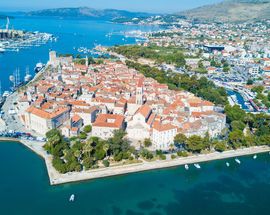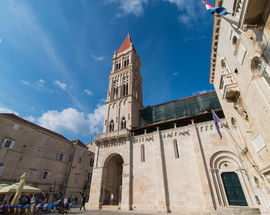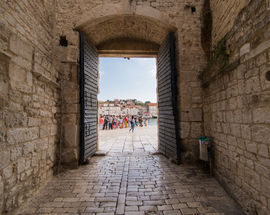Trogir Tourist Board
Founded in the 3rd century BC by Greek settlers from the island of Vis, Trogir was an important port in the region until well into the Roman era, when its importance was diminished by the rise of Salona. Again, like so many other coastal Croatian cities, Trogir underwent a tumultuous series of victories, defeats, periods of autonomy and periods of subservience to outside governments, with the city finally coming under Venetian rule from 1420 to 1797.
While the former rulers of the region were interested in Trogir for its strategic location, visitors to the city today are interested in the structures that dwell inside the walls of the city's old town. Of particular importance are the churches and buildings dating from the 13th century; the Duke's palace, which dates from the 13th century; and perhaps most impressive of all, the Cathedral of St Lawrence and the Portal of Radovan. Radovan, a master artist and Trogir native, created the intricate entryway to the cathedral in 1240.
The cultural and historical significance of the town and its architecture were verified in 1997 when UNESCO (the United Nations Educational, Scientific and Cultural Organization) added Trogir to its list of protected world heritage sites, marking the beginning of a new era in








Comments